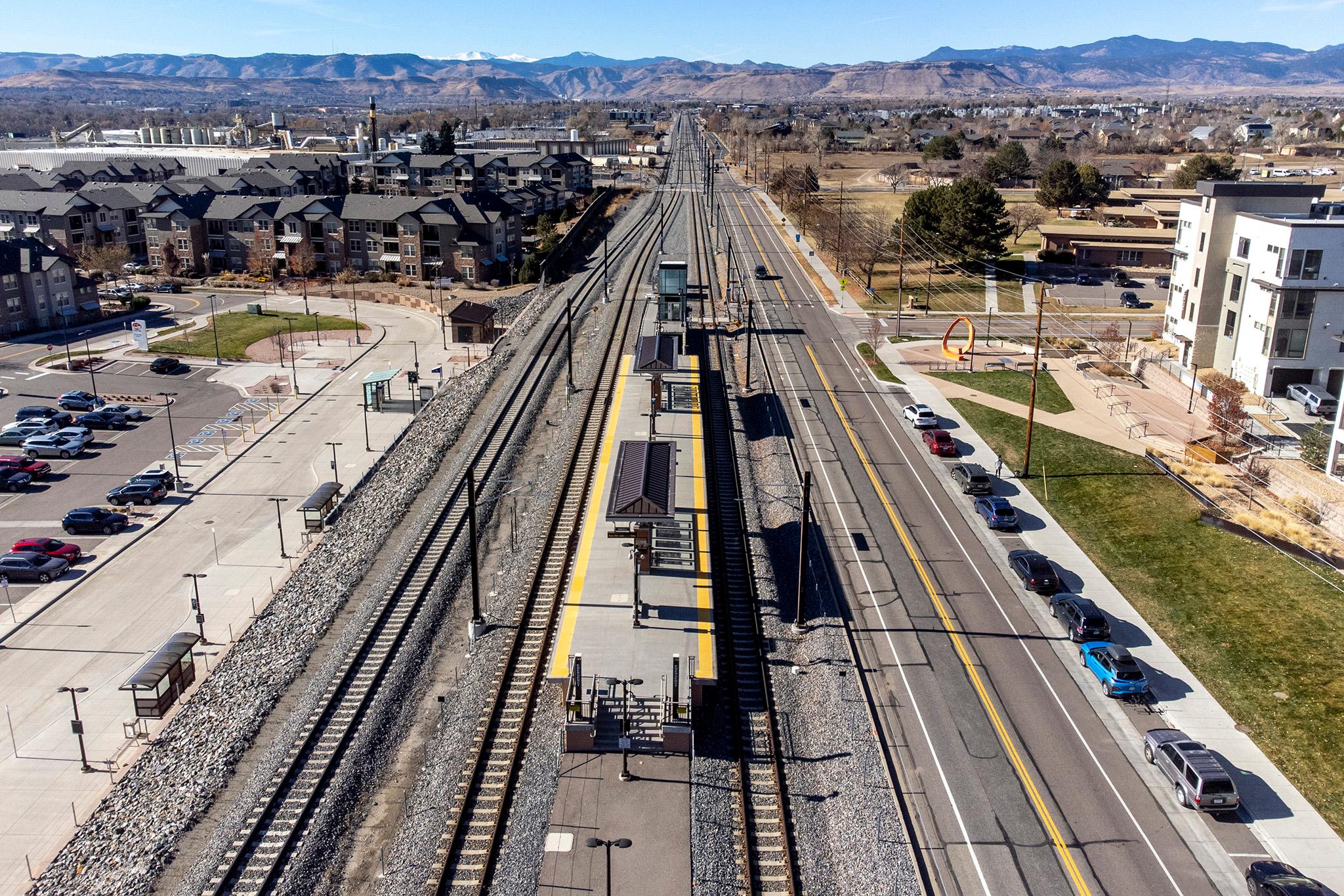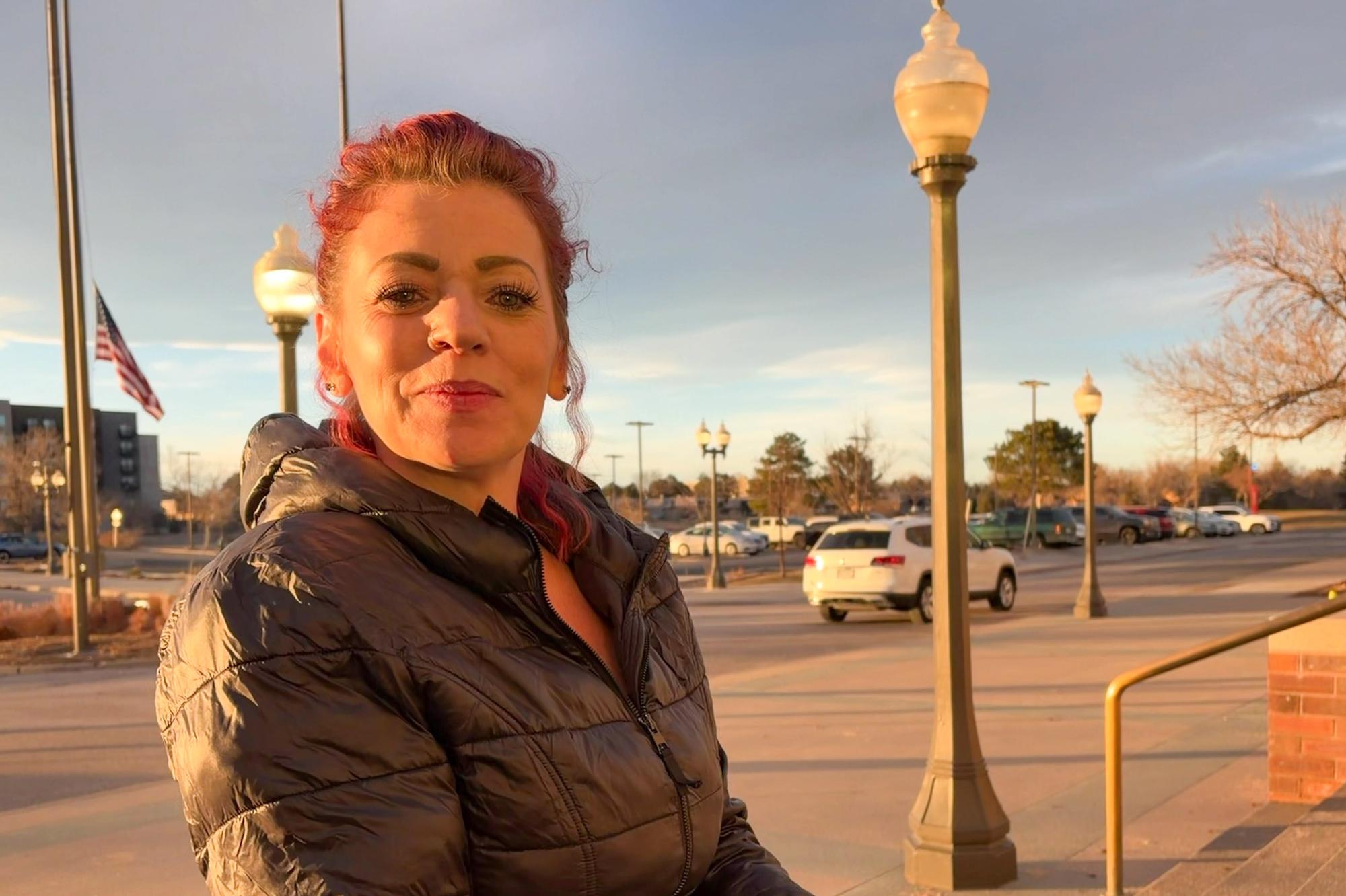
One of the year’s biggest development proposals arrived at the Colorado Statehouse on Tuesday. The new bill, HB24-1313 would allow more apartments and condos to be built near rail lines and high-frequency bus routes in many cities.
It “essentially makes sure that cities and counties are building houses near transit and jobs to bring down the cost of living,” said Rep. Iman Jodeh, a Democrat sponsoring the measure.
Over the next few years, the measure would force many local governments to rezone areas near transit, encouraging denser construction. As a result, developers would be allowed to build more apartments and condos.
The measure also would come with a big change in Colorado’s balance of power by allowing the state to essentially override local development codes. If local governments don’t cooperate, the state could withhold millions of dollars in transportation funding — or even go to court to force compliance — setting the stage for a land-use showdown in the legislature.
“This is what happens when people who don't do this for a living try to tell others, ‘This is what you need to do,’” said Kevin Bommer of the Colorado Municipal League, which leads local opposition to these kinds of bills. “And all based on the assumption that cities and towns are the problem, instead of partnering with them.”
How would it work?
The new law would apply primarily to cities on the Front Range and to Grand Junction.
Starting in 2024, the state would analyze those cities — figuring out where they have current or future transit lines as well as how much developable property is within a half-mile of rail lines and a quarter-mile of most high-frequency bus lines.
Then, the state would set “housing opportunity goals,” or “HOGs,” for the cities. Each city would have to allow an average of 40 units per acre across all of its transit-adjacent areas, with exemptions for certain properties. That’s typically enough density to allow a three-to-five-story midrise apartment.
But not every property near a transit line would automatically get rezoned for apartment complexes. Cities would focus development in “transit centers.”
The local governments could choose to allow higher densities of up to 300 units per acre in a transit center — in the range of eight to ten floors. By concentrating development there, the city could leave other areas near transit at much lower densities — while still hitting its overall required amount of transit-oriented housing.
“Cities can put that zoning capacity anywhere, as long as it’s near transit,” said Matt Frommer of the Southwest Energy Efficiency Project, a key advocate behind the bill.
The bill offers more flexibility than a similar measure in 2023, which would have automatically allowed more density in many areas near transit, he said. That earlier measure failed dramatically, despite being a top priority for Gov. Jared Polis, largely because it failed to gain enough support from fellow Democrats.
In the new proposal, cities would have until December 2026 to figure out exactly how to meet their new goals.
“We’re giving a really long runway,” Jodeh said. “If they can demonstrate they have a plan to achieve their HOG, they can get an extension.”
Cities also would have to implement strategies for affordable housing, choosing from a menu that includes options like requiring developers to include affordable units.
The measure also is sponsored by Rep. Steven Woodrow, Sen. Chris Hansen, and Sen. Faith Winter — a group of Democrats who have worked closely on housing and infrastructure issues.
Mandates and incentives
The bill would represent a philosophical change for Colorado.
It would give the state significant new power over local zoning decisions — an idea that has drawn plenty of objections over the last couple of years. Many city leaders would rather get rewards for density, instead of being forced to accommodate it.
"I think the problem starts with the presumption that municipalities are the problem and must be told what to do by the central state government in Denver,” Bommer said. “There's actually a lot of alignment on outcomes. Put the state in the role of incentivizing and improving transit."
The bill comes with a mix of incentives and mandates to bring cities into compliance.
Most notably, cities that don’t participate could lose out on funding from the Highway Users Tax Fund, with the money potentially going to participating cities. That plan will draw a fierce reaction, Bommer predicted. The highway tax fund is worth millions of dollars to some cities, which they rely upon for safety and maintenance.
“Wait until they see the first time the state tries to take away taxpayer funding for a designated purpose as a cudgel to get what it wants. And where does that stop?" Bommer said.
The bill also offers incentives: up to $35 million in grants for infrastructure and other needs, plus $30 million money in tax credits, for communities that choose to embrace density near transit or through “neighborhood centers.” That includes cities that aren’t under the bill’s mandates.
The bill has been introduced in the House and will head next to the House Transportation, Housing & Local Government Committee.
Editor’s note: This article’s headline was updated Feb. 21, 2024 to clarify that the new proposal is a bill, not yet a law.
- Colorado renters could stay after lease expiration under ‘for cause’ eviction proposal
- Eagle County’s new Lease to Local program looks to 2024 after falling short of this year’s goals
- How did property taxes become a political emergency in Colorado? 40 years of history and one wild market
- Colorado has a housing crisis. Could 3D-printed homes be a solution?









